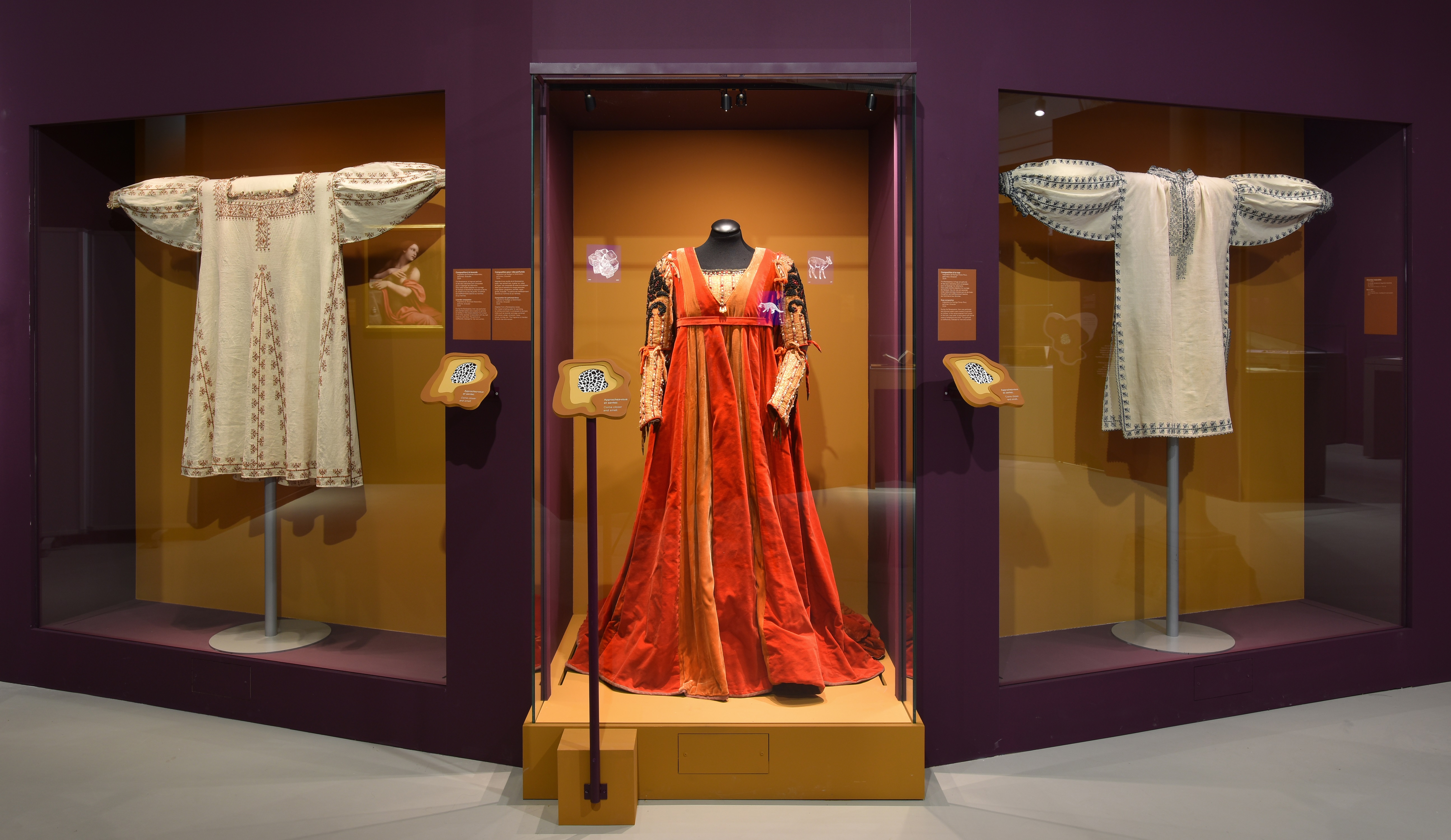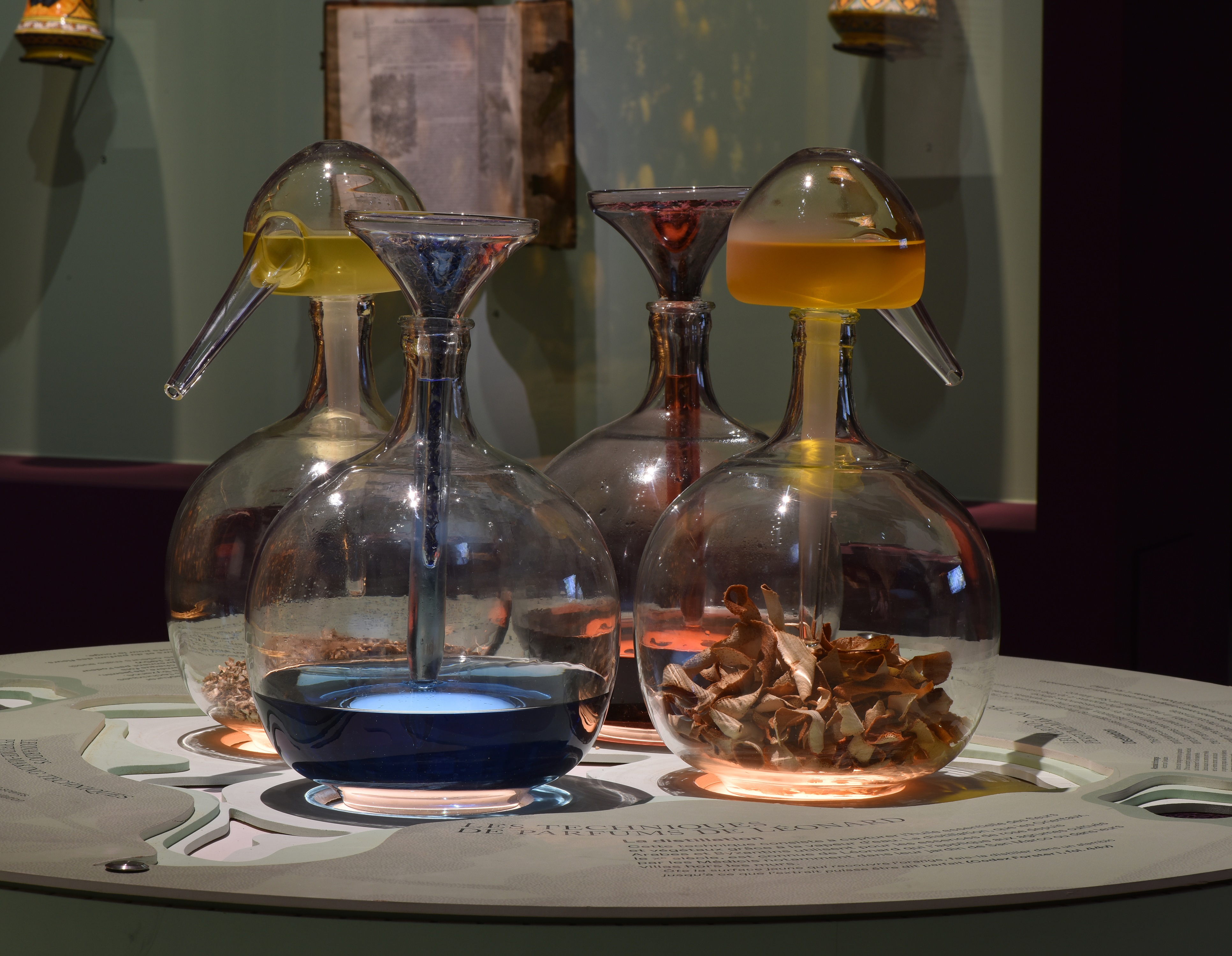Leonardo Da Vinci was pretty much the definition of a Renaissance man, and not just by virtue of being a man who lived during the Renaissance. He was an artist, a scientist, a musician; a dick pic connoisseur and the creator of a mechanical lion that could walk several steps and then rip its own chest open to shower the king of France with lilies.
In fact, the man had his fingers in so many pies, it’s hard to believe there was anything left untouched in the bakery. But as an exhibition currently running at the Château du Clos Lucé in Amboise, France, is revealing, Leonardo had at least one more obsession that you probably weren’t aware of: perfume.
Why was perfume important?
We shouldn’t be surprised that a polymath like da Vinci would dabble in niche pursuits – after all, the guy was studying geology centuries before anyone else in Europe thought to look at rocks for insights. But in fact, creating and studying perfume would probably not have been seen as all that weird at the time.
I think the use of ligustrum vulgare [wild privet] is less in fashion nowadays, and so is spikenard, which many people find rather disgusting (it has both an earthy and a cheesy note).
Dr Caro Verbeek
“During the Renaissance, the time during which da Vinci lived, perfume and smell were an essential part of daily life,” explains Dr Caro Verbeek, a scent and art historian working at Kunstmuseum Den Haag and Vrije Universiteit Amsterdam and author of Sul Naso, who has studied the intersection of smell and art for more than two decades.
Hop in a time machine and travel back to da Vinci’s time, and you’ll be greeted with a heady mix of aromas in just about every situation you encounter. There was the whole gamut of florals: from still-popular scents like jasmine, lavender, rose and iris, to bitter oranges and almonds, to things we probably wouldn’t consider all that pleasant these days – “I think the use of ligustrum vulgare [wild privet] is less in fashion nowadays,” comments Verbeek, “and so is spikenard, which many people find rather disgusting (it has both an earthy and a cheesy note).”
Then there were scents made from expensive saps and resins – things like frankincense and myrrh were “very popular,” Verbeek tells IFLScience, “and not just for religious purposes.”
Perfume wasn’t just used to make you smell nice – though, of course, that was certainly one of its applications. Rather, it was something you would encounter throughout your day: in homes and hospitals; during church, chores, and chasing ne’er-do-wells.
One of [da Vinci’s] recipes contained urine and human feces which were to be kept in a glass jar under a pile of manure for a month. It could then be used as a type of ‘stink bomb’.
Dr Caro Verbeek
We’re not kidding – not even with that last one. “[Some] perfumes were made for Catholic rituals,” Verbeek says, “so, burning incense in church – per fumum originally means ‘through smoke’, which was the way gods were worshipped since recorded history.” At the other end of the spectrum, there were what da Vinci called odori sgradevoli, or “unpleasant odors”: “stench compositions,” she explains, made “to scare away criminals”.
“One of [da Vinci’s] recipes contained urine and human feces which were to be kept in a glass jar under a pile of manure for a month,” she points out. “It could then be used as a type of ‘stink bomb’.”
Still more aromas were used to clean and fragrance fabrics, both during normal laundry – “‘lavender’ comes from lavare,” Verbeek points out, “which means ‘washing’” – and for more decadent purposes. “During fancy dinner parties perfumes were diffused throughout the space,” she explains, “or napkins were aromatized with scents like orange blossom. I could go on.”

Perfume was another means of distinction for the nobility of Renaissance Milan, sprayed on their underclothes.
Image credit: © Château du Clos Lucé – Parc Leonardo da Vinci Photo: Leonard de Serres
And perhaps its most important use? Literally saving lives.
Or, at least, that’s what people of the time would have told you. Until surprisingly recently, “people believed stench was responsible for the spread of diseases such as the plague,” Verbeek explains. Perfume, therefore, was used to prevent or cure these illnesses, she tells IFLScience, as well as to more generally ward off evil – scents which da Vinci called odori medicinali.
In short, “perfumes [fulfilled] numerous functions,” Verbeek says. “It wasn’t meant to cover up body odors in times of poor hygiene, as many suspect.”
Leonardo the Perfumier
Today, getting into scent science requires either a very specific lifelong career path or an accidental sign-up for the wrong multi-level marketing scheme. For a Renaissance polymath like da Vinci, however, it was probably simply a natural extension of his other work.
“Da Vinci was fascinated by all forms of life, including animals (he was a strict vegetarian) and plants, which he studied meticulously; not just to be able to draw and paint them, but also for their scents,” Verbeek explains.
“He also owned equipment to extract perfumes,” she tells IFLScience, and had a demonstrated (and explosive) knowledge of chemistry. “Being naturally curious and experimental, he must have started producing his own scents,” Verbeek says.

The Chinese, Arabs and Byzantines had used distillation to obtain rose essence from water vapor since the 10th century, which Da Vinci knew about and applied their techniques to citrus fruits, according to the exhibition currently at Château du Clos Lucé.
© Château du Clos Lucé – Parc Leonardo da Vinci Photo: Leonard de Serres
As with so much of his work, da Vinci’s forays into perfume would have been both comprehensive and innovative. He “was well aware of scent extracting techniques such as l’infusione in liquidi alcoolici (infusion in liquid alcohols), which is a type of maceration in which the liquid absorbs the odorants in plants,” Verbeek explains. “But he also knew enfleurage, which was highly modern at the time. In this process delicate flowers are placed on (animal) fat, which attracts the fragrant essential oils.”
It sounds quintessentially da Vincian: obscure, slightly bizarre – the kind of hobby you’d only get into if you’d already exhausted every other avenue of inquiry. But in fact, Leonardo was far from unique in this interest: “he wasn’t the only painter-perfumer at the time,” Verbeek says.
“Painters in the Renaissance often bought the ingredients for their own paints and varnishes in a farmacia – a pharmacy,” she explains. “Some of the (fragrant) materials used in painting, such as resins and gums, were also used in perfumery, and many other perfume ingredients could be acquired there, enhancing his familiarity and access to these products.”
So intrinsic was aroma to Renaissance art that, these days, we’re arguably only getting half the experience when we see da Vinci’s masterpieces in museums. Take Donna Nuda, for example – a painting believed to be completed by a student of da Vinci and under his supervision, and, according to a recent analysis, originally smelled like “a forest after rain”.
Similarly, Leonardo’s Lady with an Ermine has recently been brought back to its original, multi-sensory glory, with the National Museum in Kraków, Poland, creating a scented pen for visitors to sniff as they look at the painting. “It’s a very nice, historical museum smell,” Tomasz Sawoszczuk, the project’s lead researcher at Kraków University of Economics, told EuroNews earlier this year, noting in particular the “element of […] walnut wood,” in the scent, “because the walnut board was used as the base of the painting.”
Making “scents” of Da Vinci
So, with da Vinci’s interest and investigations into perfume so evident – and the importance of aroma and scent more generally to Renaissance life – why is it that we never hear about this particular portion of his oeuvre?
Smelling was considered a ‘lower’ sense and was historically deemed childish, animalistic, primitive, and non-intellectual.
Dr Caro Verbeek
“This is a highly important question,” Verbeek tells IFLScience, “and it has to do with the Western preoccupation with the sense of sight, and to a certain degree hearing, which are supposedly the only senses that can make people contemplate, think, and obtain knowledge – which of course is a fallacy.”
Meanwhile, “smelling was considered a ‘lower’ sense and was historically deemed childish, animalistic, primitive, and non-intellectual,” she explains. “This attitude hasn’t changed much since.”
As a result, Leonardo’s more olfactory pursuits have been consistently overlooked in favor of his (admittedly also impressive) artistic and scientific art and writings. A lack of initial scholarly interest in the subject in turn means that newcomers don’t realize there’s anything to study; with even his Wikipedia entry not mentioning it, laypeople never learn that da Vinci was interested in perfume at all.
It’s for this reason that exhibitions such as the one currently running in Amboise are so important, Verbeek tells IFLScience. “This forgotten aspect of history […] cannot be taught by words alone, but by actual experiences,” she says.
“I am happy there is a growing amount of attention to this emerging field.”
The exhibition “Leonardo da Vinci and the Perfumes of the Renaissance” is running from now until September 15, 2024 at the Château du Clos Lucé, Amboise, France.
Source Link: Leonardo Da Vinci Was A Master Perfumer, But Practically Nobody Knows About It